Chapter: 11th Commerce : Chapter 24 : Retailing
Types of Retailers
Types of Retailers
On the basis of the size of the
business, product mix, pricing and service level and ownership of the business,
it can be classified into the following categories:
i. Itinerant or Mobile Traders, ii.
Fixed shop small retailers, iii. Fixed shop large scale retailers
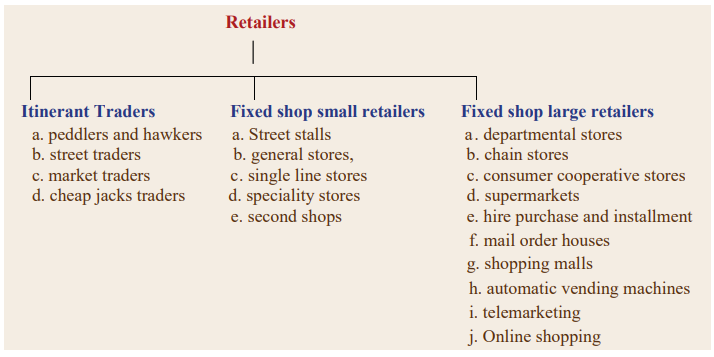
1. Itinerant or Mobile Traders
The traders who have no fixed place of sale are called Itinerants. They move from
one place to another place in search of customers. They are also known as
Mobile traders. Mobile traders deal in low price, daily usable items such as
fruits, vegetables, fish, clothing, books, etc. They require small amount of
investment. The types of itinerants are as follows:
a. Peddlers and Hawkers
Peddlers are individuals who sell their
goods by carrying on their head or shoulders moving from place to place on
foot. Hawkers are petty retailers who sell their goods at various places such
as bus stop, railway station, Public Park and gardens, residential areas and
other public places using a convenient vehicle to carry goods from place to
place.
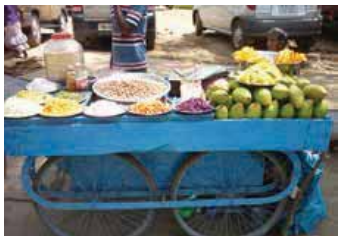
b. Street Vendors
The traders sit on the footpath of the
road or at the end of the road (pavement) and sell their goods such as fruits,
vegetables, books, etc. are called Street vendors.
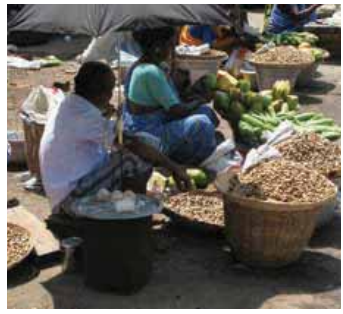
c. Market Traders
Small traders open their shops at
different places on fixed days or dates such as every Sunday or alternative
Wednesdays and so on ( Varasandhai - weekly market). They deal in one
particular line of merchandise and in low priced consumer items of
daily use. Examples Pollchi, Manapparai, Ranipet, etc.

d. Cheap Jacks
Those retailers who have independent shops of temporary nature in a business locality are depending upon the potentiality of the area. They deal in consumer goods and services such as shoes and chappals, plastic items, repair of watches, etc.
2. Fixed Shop Retailers
The retailers who maintain permanent
establishment to sell their goods are
called Fixed Shop Retailers. They do not move from place to place to serve
their customers. The fixed shop retailers
can be classified into two types on the basis of the size of their operations. They are: a.
Fixed Shop Small Retailers and b. Fixed Shop Large Retailers
Fixed shop small retailers are of the
following categories:
a. Street Stalls
These small shop-keepers are commonly
found at street crossings or other busy street
cornersattractfloatingcustomersanddealin cheap variety of goods like hosiery
products, toys, soft drinks, etc. They get their supplies from local suppliers
and wholesalers.
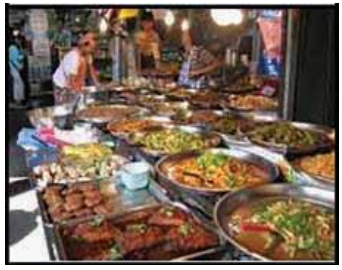
b. General Stores
General Stores sell a wide variety of
products under one roof, most commonly found in a local market and residential
areas to satisfy the day-to-day needs of the customers residing in nearby localities.
They remain open for long hours at convenient timings and often provide credit
facilities to their regular customers. For example, a provision store deals in
grocery, bread,butter, toothpaste, soaps, washing powder, soft drinks,
confectionery, stationery, cosmetics, etc.

c. Single-line Stores
Single-line Stores are small shops which
deal in a particular line of products such
as garments, stationery, textiles, medicines, shoes, etc. They are
generally situated in market places and deal in a variety of goods in that line
of product.
d. Speciality Stores
Speciallity Stores deal in a particular type
of product under one product line only.
For example, Sweets shop specialised in
Tirunelveli Halwa, Bengali Sweets, etc.
e. Seconds Shops
These shops deal with second-hand goods
or used articles in a low price such as books, furniture, utensils, clothes,
automobiles, etc. and also new defective goods.
3. Fixed Shop Large Retailers
The retailers having permanent
establishment and dealing in large scale
are called Fixed shop large scale retailers. They are popular due to
urbanisation, modernisation and other reasons. The most common forms of large
scale retailers are as follows:
1.
Departmental Stores
2.
Chain Stores or Multiple Stores
3.
Super Markets
4.
Consumer Cooperative stores
5.
Hire purchase and Instalment Traders
6.
Shopping Malls
7.
Mail order houses
8.
Automatic Vending Machines
9.
Tele-marketing
10.
Online Shopping
1. Departmental Stores
A Departmental Store is a large retail
establishment offering a
wide variety of products, classified into well defined
departments. Each department specialise
in one particular line of product aimed at satisfying every customers’
needs under one roof. Each department is like a separate shop with centralised
purchasing, selling and accounting. Administrative activities of the
departmental stores are managed by a General Manager. The General Manager
appoints department managers of each department.
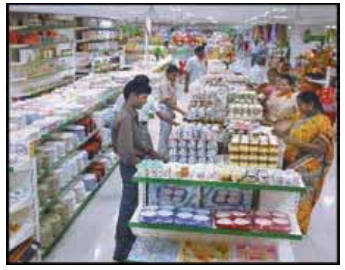
Features
i.
Large Size:
A department is a large scale retail showroom
requiring a large capital investment by forming a joint stock company managed
by a board of directors. There is a Managing Director assisted by a general
manager and several department managers.
ii.
Wide Choice:
It acts as a universal provider of a
wide range of products from low priced to very expensive goods (Pin to Car) to
satisfy all the expected human needs under one roof.
iii.
Departmentally organised
Goods offered for sale are classified
into various departments. Each department specialises in one line of product
and operates as a separate unit.
iv.
Facilities provided:
It provides a number of facilities and
services to the customers such as restaurant, rest rooms, recreation, packing,
free home delivery, parking,etc.
v.
Centralised puchasing
All the purchases are made centrally and directly from the manufacturers and operate separate warehouses whereas sales are decentralised in different departments.
Advantages
i.
Convenience in buying
The departmental stores provide great
convenience to all the members in a family in buying almost all goods of their
requirements at one place. A large variety of goods available in all the
departments enable customers to save time and no need to run from one place to
another to complete their shopping.
ii.
Attractive services
It aims at providing maximum services
and facilities to the customers such as home delivery of goods, execution of
telephone orders, rest rooms, restaurants, salons, children game centres, etc.
iii.
Central location
These stores are usually located at
central places so that more people can approach easily.
iv.
Elimination of Middleman
A departmental store combines both the
functions of retailing as well as warehousing. They purchase directly from
manufacturers and operate separate warehouses. It helps in eliminating
undesirable middlemen between the producers and the consumers.
v.
Economies of Large Scale Operations
The Departmental stores are organised at
a large scale i.e., buy goods in bulk, therefore they enjoy the benefit of
special discount. In turn, the customers get their goods in quality and lower
price.
Limitations
i.
High cost of operations
A departmental store requires a large
building with ample parking at a central place. It has to incur
heavy expenditure on salaries,
maintenance of building, customer services, advertising, etc. As a result,
establishment and overhead cost of operations are very high.
ii.
Higher prices
Due to high operating costs, prices of
goods in a departmental store are comparatively high. Only rich persons can
afford to buy goods at a departmental store.
iii.
Distance
It is located at a central place of a
city, away from people living in suburban areas have to travel a long distance
to reach the store.
iv.
Lack of personal touch
The management of a store finds it very
difficult to maintain personal contact with the customers. The salaried staff
may not take interest in securing the satisfaction and goodwill of the
customers
v.
Difficult to establish
A large amount of capital investment and a large number of specialised persons are
required to establish a departmental store.
vi.
High risk
Due to central location and large scale
operations, risk of loss is very high
Change in tastes and fashion and market
fluctuations may lead to heavy loss.
2. Chain Stores or Multiple Shops
A number of identical retail shops with
similar appearance normally deal in standardised and branded consumer products
established in different localities owned and operated by manufacturers or
intermediaries are called as Chain stores or Multiple shops. In USA, these are
known as chain stores but these are
popular as multiple shops in Europe. They deal only in particular line of
product and specialise in the same. Many such shops are in India. For example :
Bata.
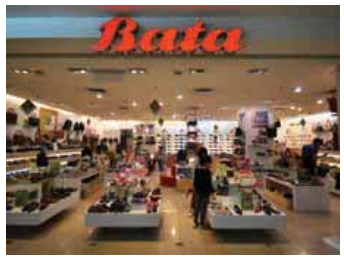
Features
i.
Location
These shops are located in fairly
populous localities where sufficient number of customers can be approached.
ii.
Nature of product
These shops deal in a particular product
line and specialise in the same product
i.e, standardised and branded consumer products.
iii.
Centralised management
The manufacturing or procurement of
goods for all the retail units is centralised at the head office, from where
the goods are despatched to each of these shops.
iv.
Fixed price
The prices of goods are fixed and all
sales are made on cash basis.
v.
Role of Sales personnel
The sales persons play an active role in helping the consumers to complete their shopping i.e., in the slection and choice of their goods as per the tastes.
Advantages
i.
Economies of large scale
Multiple shops are owned
and operated by manufacturers or
intermediaries. Centralised and bulk buying, results in lower costs.
ii.
Elimination of middlemen
Goods are sold in multiple shops at
relatively low prices. By selling directly to the consumers, it is able to
eliminate unnecessary middlemen
iii.
No bad debts
All the sales are made in these shops on
cash basis only. So, no bad debts will arise and no reduction of working
capitals.
iv.
Convenience in shopping
Shops are located in all important
areas. Therefore, customers are not required to travel long distances for long
distances for making purchases.
v.
Public confidence
Multiple shops enjoy public confidence
due to fixed prices, standard quality, uniform appearance and selection of
goods with the help of salesmen.
Limitations
i.
Limited variety
Multiple shops deal only in limited
range of products.
ii.
Absence of services
Customers do not get credit, home
delivery and other facilities.
iii.
Lack of personal touch
The owner loses direct personal contact
with the customers. The paid staffs do not take personal interest in each and
every customer.
iv.
Inflexibility
All the branches centrally controlled
and uniform policies are adopted for all the shops.
3. Super Markets
A Super market is a large retail store
selling a wide variety of consumer goods on the basis of low price appeal, wide
variety and assortment, self-service and heavy emphasis on merchandising
appeal. The goods traded are generally food products and other low priced,
branded and widely used consumer products such as grocery, utensils, clothes,
house hold goods, electronic appliances and medicines. For example : The
Nilgiris
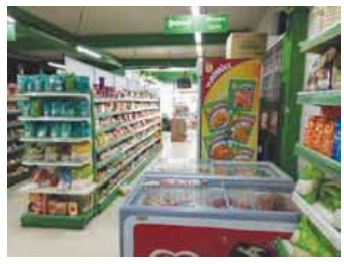
The important characteristics of a super
market are listed below:
1.
Supermarkets are generally situated at
the main shopping centres.
2.
The goods kept on racks with clearly
labelled price and quality tags in such stores,
3.
The customers move into the store to
pickup goods of their requirements, bring them to the cash counter, make
payment and take home delivery.
4.
The goods are sold on cash basis only.
No credit facilities are made available.
5.
Supermarkets are organised on
departmental basis.
6.
It requires huge investment.
4. Cooperative Store
A
consumers cooperative store
is a retail organisation owned, managed and
controlled by the consumers themselves to obtain products of daily use at reasonable
low prices. Its objective is to eliminate profits to middlemen by establishing
a direct contact with the manufacturers. People belonging to middle and low
income groups , at least 25 persons have to come together to form a voluntary association and get it registered
under the Cooperative Societies Act.
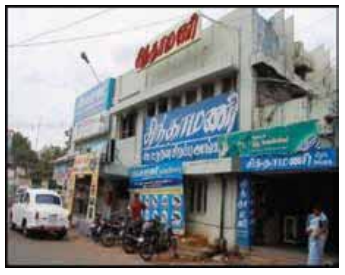
The capital of a cooperative store is
raised by issuing shares to members. The management of the store is democratic
and entrusted to an elected managing committee, where one man one vote is the
rule. The cooperative stores are very famous in Tamilnadu. For example,
Kamadhenu and Chinthamani cooperative supermarkets in Chennai, Karpagam in
Vellore, etc.
5. Hire purchase and Instalment Trade
Hire purchase trading is a system by
which the seller agrees to sell the articles to the buyer on condition that the payment
of the article will be made in a fixed number of instalments till the sale price is
paid. Though the buyer gets possession of the goods immediately on signing the
contract the ownership does not pass on till the payment of last instalment.
The buyer prefers to pay a lump sum or a part of the price initially i.e., down
payment and the balance in instalments as per the contract. The seller
continues to be the owner of the article till then. If the buyer commits a
default in payment, the seller is entitled to repossess the article. It is also
a form of credit sale. Only durable articles like television, air conditioner,
refrigerator, washing machines, etc., are suitable for hire sale.
Instalment system is a type of purchase in which the price amount of the product is not paid initially but in instalments. It is also called as deferred payment system. Under this system, title or ownership of articles as well as possession is passed on to the buyer as soon as the first instalment is paid. On default of payment, the seller cannot seize the article but recover the dues through court.
6. Mail Order Houses
Mail order houses are the retail outlets
that sell their merchandise through mail. There is generally no direct personal
contact between the buyers and the sellers in this type of trading.
Procedure
a.
Advertisements provide information about
the products to consumers
b.
Order receiving and processing
On receiving the orders, the goods are
sent to the customers through the post office by Value Payable Post (VPP).
c.
Receiving Payments
The customers may be asked to make full payment in advance or at the time of receiving the goods In this arrangement, there is no risk of bad debt. Perishable goods like milk are not suitable for sale by mail order. Suitable goods are books, watches, etc.
7. Automatic vending machine
Automatic vending machine is a new form
of direct selling. It is a machine operated by coins or tokens. The buyer
inserts the coin or the tokens into the machine and receives a specified
quantity of a product from the machine. AVMs are placed at a convenient
location such as railway stations, airports, petrol pumps, etc.
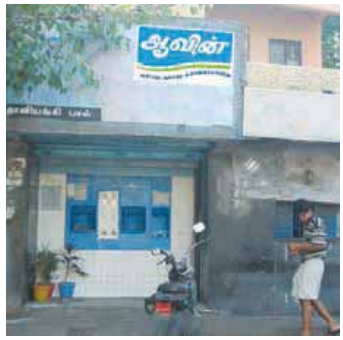
Example Aavin Dairy Milk through AVMs
8. Shopping malls
Shopping malls are developed due to
change in departmental stores in modern time. A shopping mall functions in a
multi-storey building. Many small to big shops are commenced under the separate
ownership. Various types of branded goods of daily requirement and
luxurious products are available.Modern facilities such as refreshment hall,
entertainments for children, wi-fi, auditorium, etc. are provided in shopping
mall.
For example, FORUM in Chennai.
9. Telemarketing
Telemarketing can be divided into two
parts.
i. Telephonic Marketing
Potential Customers are contacted
through telephone or mobile to provide information about the products. Willing
customers visit the office and place the orders. This method is useful for
loan, financing, insurance services, credit card, etc. No middlemen in this
marketing and cost reduced accordingly.
ii. Television Marketing
In this
method, customers are attracted
by providing full information of product or service through TV demonstrations.
Customers are given either phone number or name of the website to place the
order. Payments for these products are made through two methods.
i. Advance payment by debit/credit card.
ii. Payment in cash at the time of delivery.
For example- Tablemate and other home appliances
10. Online Shopping or Internet Marketing
The manufacturers or the intermediaries
place the advertisement of their products on different media of internet like
e-mail, portal and browser. Sometimes, they have their own website like
Flipkart, Amazon, Snapdeal. etc. The customers compare the products of
competitors by observing such advertisements and select the product through
internet and make the payment through online or cash on delivery.

Because of the absence of middlemen,
showroom expenses, etc. products areavailable at cheaper price in comparison to
local market. Customers also get after sales services.
Related Topics